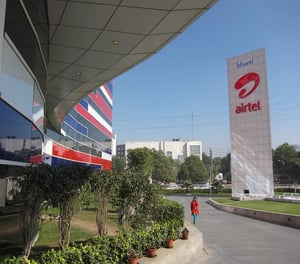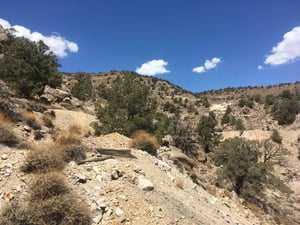BlackRock Latin American Investment Trust plc (LON:BRLA) is the topic of conversation when Kepler Trust Intelligence’s Head of Investment Companies Research Thomas McMahon caught up with DirectorsTalk for an exclusive interview.
Q1: Thomas, could you just start by telling us more about BlackRock Latin America and what they do?
A1: BlackRock Latin America invests, as the name suggests, in Central and South America. What this means in practice is the portfolio is dominated by Brazilian and Mexican equities so Brazil makes up around 65% of the regional index and Mexico around 25%. So they’re always very key weights in the portfolio.
It can also invest in countries like Chile, Peru, and Colombia, and will sometimes take off-benchmark positions in frontier markets such as Argentina.
I think an interesting thing to note is that if you invest in emerging markets through a mainstream emerging market fund, you’ll very likely have almost no exposure to this region. So if we look at the MCI Emerging Market Index, less than 5% is allocated to Brazil and so this is a pretty glaring emission, I think, for many investors’ portfolios, which makes this trust quite interesting.
Q2: Why do you think the trust is attractive to investors?
A2: There are a number of reasons why Latin America is an interesting place to invest in the long term.
The first is, I think, geopolitics so we’ve increasingly seen world trade shift around two axes, the US and China, and Latin American countries generally sit between those two camps and are able to maintain good political and good economic ties with both countries. This means they’re in a strong position to get the business of multinationals, which are, looking for different places to site their manufacturing and other activities that aren’t so tied to China. Mexico in particular has really benefited from this in the last few years.
I think also we should remember the basic reason that people often invest in emerging markets, which is rapid economic development, so in Latin America, 70% of people still don’t have a bank account, which obviously provides huge growth potential for financial services companies that can take that business. A good example of successful stock in that area is Nubank, an online bank, which is the largest company in Brazil at the moment.
I think I would also point to the dividend when it comes to this trust specifically so they will pay 1.25% of NAV each quarter in a dividend, so 5% annualized of NAV, this can be paid from income or capital. So in other words, the managers are able to focus on the best total return potential, which does bring a significant income in Latin America, but the board can supplement that with payments from capital reserves.
So, lots of growth drivers, and then also a high income as well.
Q3: So, how has the trust performed recently?
A3: 2022 and 2023 were both really good years for the region, up around 21% and up around 30%, and the trust did very well as a result.
So, sterling strength was very significant in 2022 and very beneficial to returns but over the whole period, I think it was this reshoring trend that really boosted the region, along with expectations of interest rate cuts, particularly in Brazil, but across the region really, which really boosted activity over ‘23.
BlackRock Latin American Investment Trust itself outperformed, thanks partly to being overweight, Brazilian domestic stocks in anticipation of rate cuts.
So those are two very good years.
2024 has been a difficult year. At the time of recording this, both Trust and Index are down around 20% or so, a few things have happened. Firstly, domestic politics have been a bit more difficult, there’s an election in Mexico and then in Brazil, the Central Bank has had to raise rates in the last month or two. So, those things have been issues, and then of course, we’ve had the election of Donald Trump, which has raised questions around trade policy and tariffs and so on. So, there’s been some uncertainty weighing on the market.
I think it’s a good reminder that Latin America has always been a very volatile region, politics, macroeconomics, currency, commodity exposure, which is very significant in the region. All of these things create volatility, and BRLA itself tends to be geared, which obviously magnifies that so I think that’s the risk to be borne in mind. At the same time, the long-term growth drives are still in place and of course, after a sell-off, the market’s cheaper.





































